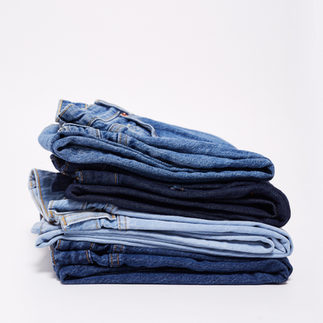Premium & Luxury Clothing Fabrics: What Fashion Brands Need to Know Before Choosing Textiles
- SEWANO Group

- May 17
- 4 min read
Updated: May 17
When it comes to creating a high-end clothing collection, your fabric choices will make or break your brand's perception. For emerging fashion brands, understanding the differences between premium and luxury textiles is crucial to ensuring your designs look, feel, and perform as intended.
In this guide, we explore the most commonly used materials in premium and luxury clothing, breaking down their properties, benefits, and what fashion brand owners need to consider when sourcing and manufacturing with them.

Why Fabric Choice Matters in Premium Fashion
Your fabric is more than just the base of your design — it influences everything from drape and fit to pricing, sustainability, and customer experience. Luxury and premium garments rely on textiles that look refined, feel exceptional on the skin, and perform well over time. Choosing the right textile is not just a creative decision but a business one too, especially when it comes to manufacturing costs, MOQs, and brand positioning.
1. Silk
Why it's used: Silk is a symbol of elegance and classic luxury. Its natural sheen, softness, and drape make it ideal for high-end eveningwear, blouses, and lingerie.
Properties: Lightweight, breathable, hypoallergenic, and has a natural luster. It drapes beautifully and feels ultra-soft on the skin.
Best uses: Dresses, shirts, scarves, linings, and delicate tops.
What to know: High price point. Requires careful handling during sewing. Silk blends (like silk-cotton or silk-viscose) offer similar looks with easier maintenance and slightly lower cost.

2. Wool (Merino, Cashmere, Alpaca)
Why it's used: Wool offers structure, warmth, and a timeless aesthetic, making it ideal for tailored garments, knitwear, and outerwear.
Properties: Breathable, temperature-regulating, wrinkle-resistant, and available in various textures and weights.
Best uses: Coats, suits, sweaters, trousers.
What to know: Cashmere and alpaca are considered ultra-luxury fibers. Blending wool with silk or synthetic fibers can reduce costs and increase durability.
3. Cotton (Pima, Egyptian, Organic)
Why it's used: Premium cotton offers everyday luxury with its softness, breathability, and versatility.
Properties: Comfortable, durable, natural feel. Pima and Egyptian cotton have longer fibers for a smoother, more refined texture.
Best uses: Shirts, t-shirts, trousers, basics, resortwear.
What to know: Opt for organic or GOTS-certified cotton for sustainability. Lower-quality cotton can affect the perceived quality of the entire garment.
4. Linen
Why it's used: Linen is favored for its natural, breathable feel — ideal for premium resortwear and summer collections.
Properties: Lightweight, moisture-wicking, highly breathable. Natural wrinkles give it a relaxed, upscale look.
Best uses: Shirts, dresses, skirts, trousers, lightweight suits.
What to know: Linen can shrink; pre-washing is essential. It’s often blended with cotton or viscose for improved softness and drape.

5. Tencel / Lyocell
Why it's used: As an eco-friendly alternative to silk or cotton, Tencel offers premium softness and sustainability in one.
Properties: Soft, silky feel with excellent drape. Breathable, biodegradable, and wrinkle-resistant.
Best uses: Shirts, blouses, dresses, loungewear.
What to know: Great for brands with a sustainability focus. Blends well with cotton or elastane for improved comfort.

6. Viscose / Rayon
Why it's used: Offers the luxurious appearance of silk at a more affordable price point.
Properties: Smooth, lightweight, drapey. Comfortable and cool against the skin.
Best uses: Dresses, skirts, blouses, linings.
What to know: Tends to shrink or stretch if not handled properly. Sustainable versions include EcoVero and bamboo viscose.

7. Leather (Natural, Vegetable-Tanned)
Why it's used: Leather adds structure, durability, and a bold aesthetic to any collection.
Properties: Long-lasting, develops a beautiful patina over time. Each hide is unique.
Best uses: Jackets, pants, skirts, accessories.
What to know: Ordered in square feet, not meters. Sampling is more expensive. Precision in cutting and stitching is crucial — work with a factory experienced in leather.
8. Denim (Premium, Selvedge, Organic)
Why it's used: Though casual, premium denim elevates everyday wear with craftsmanship and character.
Properties: Durable, structured, and gets better with wear. Selvedge denim has a clean, finished edge.
Best uses: Jeans, jackets, skirts.
What to know: Stretch vs rigid denim affects patternmaking and fit. Washes and finishes impact cost and style. Raw denim is more expensive but ages beautifully.
Blends to Watch:
Luxury often lies in smart blends:
Silk-wool for luxe tailoring
Cotton-cashmere for elevated basics
Tencel-linen for breathable structure with softness
Blending can optimize fabric performance while maintaining a premium feel and reducing cost.
Key Tips for Fashion Brands:
Request swatches early. Fabric appearance and hand-feel can’t be judged online.
Understand MOQ & pricing. Premium fabrics often require higher minimums.
Test with sampling. Fit, drape, and color can vary across materials — never skip samples.
Communicate with your factory. Experienced manufacturers can guide you toward better choices and prevent costly mistakes.

Choosing the right textile is one of the most important steps in creating a premium or luxury fashion collection. Whether you're drawn to the timeless allure of silk, the everyday refinement of Egyptian cotton, or the sustainable appeal of Tencel, your material choices speak volumes about your brand.
👋 If you're planning your next premium collection and prefer a European-based manufacturing team, we're here to help. Feel free to contact us — let's talk about how we can bring your vision to life.
👉 Visit our Services Page to explore SEWANO Group



























